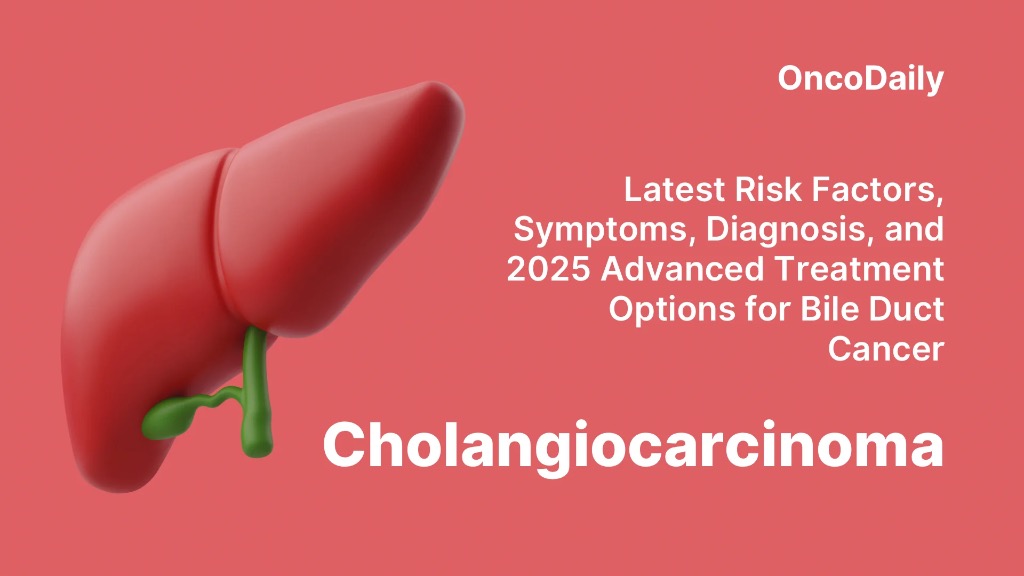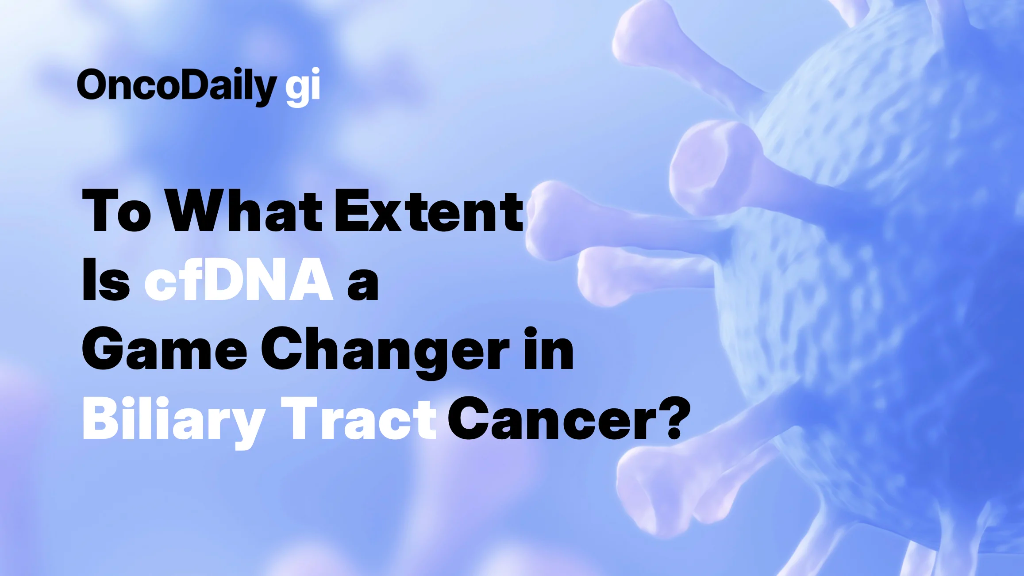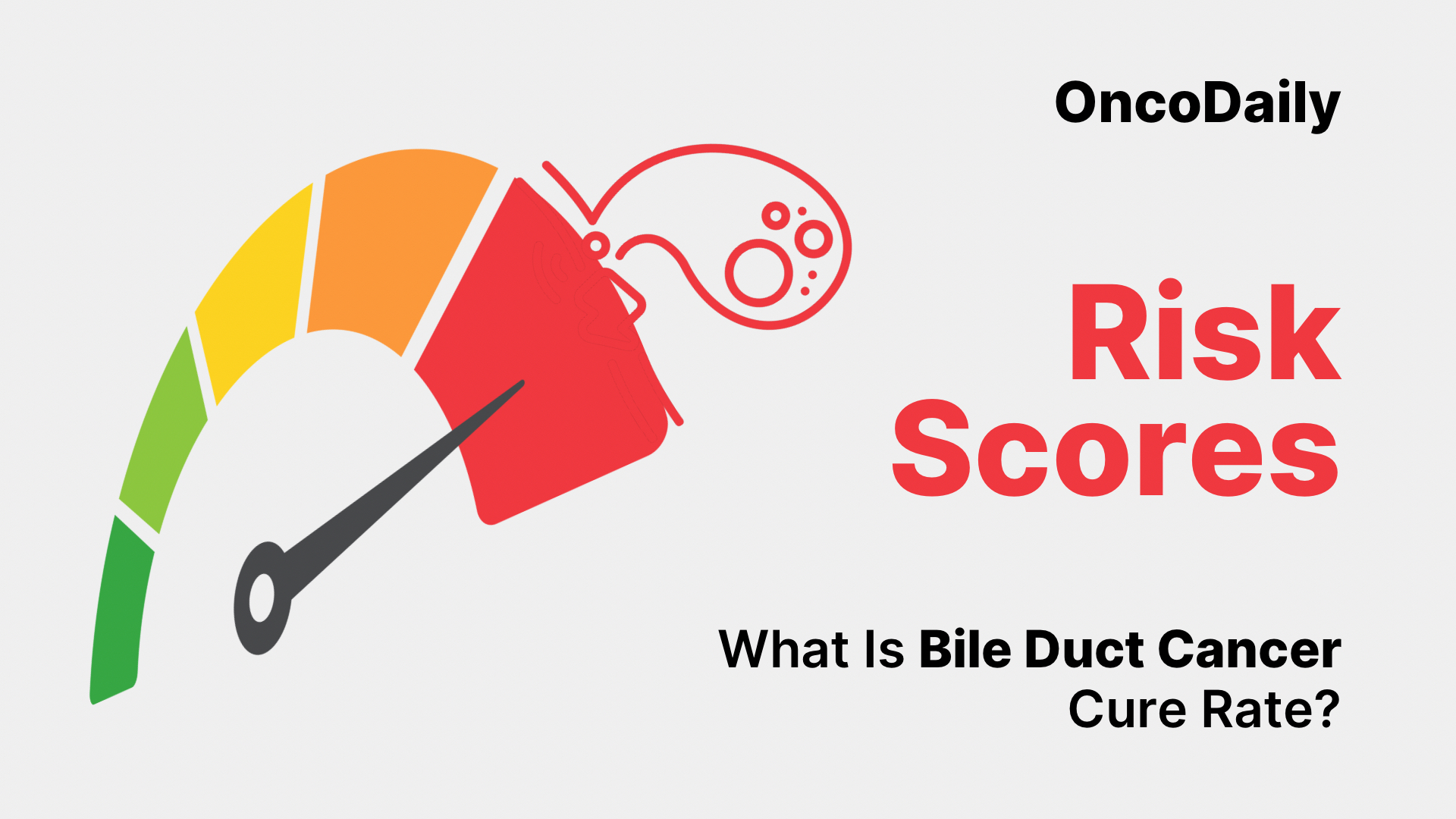Bile duct cancer, also known as cholangiocarcinoma, is a rare but aggressive malignancy that arises from the cells lining the bile ducts—the small tubes that carry bile from the liver to the gallbladder and small intestine. This cancer can occur inside the liver (intrahepatic) or outside the liver (extrahepatic), including the perihilar and distal bile ducts.
Although uncommon, its incidence is rising globally due to improved imaging and detection (Banales et al., 2020). Despite advances in oncology, the bile duct cancer cure rate remains among the lowest of gastrointestinal cancers, largely because most cases are diagnosed at an advanced stage.

Read About Cholangiocarcinoma on OncoDaily
How Common Is Bile Duct Cancer?
According to the Global Cancer Observatory (GLOBOCAN 2024), approximately 210,000 new cases of cholangiocarcinoma are diagnosed annually worldwide, representing about 1% of all cancers. It is more frequent in Southeast Asia, particularly in countries where liver fluke infections are endemic, such as Thailand and Vietnam. In Western countries, risk factors include chronic biliary inflammation, primary sclerosing cholangitis (PSC), biliary stones, and hepatitis B or C infection.
While rare, the growing awareness and improved diagnostics have led to earlier detection in select patients, which directly impacts the bile duct cancer cure rate.
What Does Cure Mean in Bile Duct Cancer?
A “cure” in bile duct cancer means complete eradication of cancer cells with no recurrence during long-term follow-up, generally five years or longer. However, due to its aggressive biology and tendency to spread early, complete cure is possible only when the tumor is detected at a resectable stage.
In most patients, the bile duct cancer cure rate depends on achieving a complete (R0) surgical resection—meaning no microscopic cancer cells are left behind. Without surgery, cure is rarely achievable, and treatment focuses instead on prolonging survival and improving quality of life.
Cure Rate by Stage of Disease
The bile duct cancer cure rate varies significantly by stage at diagnosis:
- Stage I (localized): When the tumor is confined to the bile duct and completely resected, 5-year survival—and potential cure—ranges between 35% and 45% (Bridgewater et al., 2023).
- Stage II–III (locally advanced): If the tumor has invaded nearby vessels or lymph nodes but remains resectable, the cure rate drops to 20–30%, depending on surgical margins.
- Stage IV (metastatic): Once the cancer spreads to distant organs, the chance of cure is extremely low, with most patients treated palliatively.
These differences underscore why early detection is vital for improving the bile duct cancer cure rate worldwide.
Surgical Resection and the Chance of Cure
Surgery remains the cornerstone of curative therapy. Only about 20–30% of patients are eligible for surgery at diagnosis. For those who undergo successful resection with clear margins, the bile duct cancer cure rate can exceed 40% (Weber et al., 2022).
Surgical approaches vary based on tumor location:
- Intrahepatic tumors may require partial hepatectomy.
- tumors often need complex liver resections with bile duct reconstruction.
- Distal tumors are treated with pancreaticoduodenectomy (Whipple procedure).
Even after surgery, recurrence occurs in up to 60% of patients within five years, so adjuvant therapy—chemotherapy or chemoradiation—is recommended to improve long-term cure prospects.
The Role of Adjuvant and Neoadjuvant Therapy
Clinical trials have shown that systemic therapy can enhance outcomes after surgery. The BILCAP trial established adjuvant capecitabine as the standard of care, improving overall survival and disease-free survival (Primrose et al., 2019). This regimen has contributed to a modest improvement in the bile duct cancer cure rate, especially in patients with R0 resections.
Neoadjuvant (pre-surgical) approaches are also under investigation for borderline-resectable disease. By shrinking tumors before surgery, these therapies increase the chances of achieving a complete resection and, therefore, a higher bile duct cancer cure rate.
Liver Transplantation in Selected Cases
For unresectable but localized perihilar cholangiocarcinoma, liver transplantation following neoadjuvant chemoradiation has emerged as a potential curative strategy. Centers such as the Mayo Clinic report 5-year survival rates exceeding 65%, representing one of the highest documented bile duct cancer cure rates in advanced-stage patients (Darwish Murad et al., 2012).
Strict eligibility criteria and specialized treatment protocols are essential, but this approach has redefined what is possible for select individuals.
Cure Rate in Advanced and Metastatic Disease
In advanced stages, bile duct cancer is typically incurable, but newer systemic treatments have extended survival and improved disease control. The ABC-06 trial showed that second-line chemotherapy with FOLFOX improved median survival compared with best supportive care (Lamarca et al., 2021).
The development of targeted therapies for specific genetic alterations has revolutionized treatment options. For example:
- FGFR2 fusions (common in intrahepatic cholangiocarcinoma) respond to FGFR inhibitors such as pemigatinib and futibatinib.
- IDH1 mutations respond to ivosidenib.
- MSI-H or TMB-high tumors may benefit from immunotherapy with pembrolizumab.
While these therapies are not curative for most, they can induce durable responses that approximate remission, slightly improving the bile duct cancer cure rate in subsets of patients with actionable mutations.
Prognostic Factors Affecting Cure Rate
Several factors determine the likelihood of cure:
- Tumor location and stage: Distal and intrahepatic cancers have better outcomes when resected early.
- Surgical margins: Complete (R0) resection is the strongest predictor of cure.
- Lymph node status: Absence of nodal metastasis correlates with higher bile duct cancer cure rate.
- Molecular profile: Genetic mutations can guide targeted therapy with curative potential in select patients.
Patient performance status and comorbidities: Healthier patients tolerate surgery and systemic therapies better.

Read About To What Extent Is cfDNA a Game Changer in Biliary Tract Cancer on OncoDaily gi
Early Detection and Screening: The Key to Cure
Because symptoms such as jaundice, itching, or abdominal pain often appear late, bile duct cancer is rarely diagnosed early. Efforts to improve early detection through advanced imaging, blood biomarkers (e.g., CA19-9, circulating tumor DNA), and screening in high-risk populations could significantly enhance the bile duct cancer cure rate in the future.
Emerging studies are exploring the role of liquid biopsy in monitoring minimal residual disease after surgery, helping identify recurrence early when it is still curable.
Living Beyond Bile Duct Cancer
Survivorship after bile duct cancer is possible, especially for patients who undergo successful surgery. Regular follow-ups, imaging, and liver function monitoring are essential to detect recurrence early. Nutrition, exercise, and psychological support also contribute to better recovery and quality of life.
For those living with advanced disease, palliative care and symptom management remain critical components of comprehensive cancer care. Each new therapy contributes incrementally to improving the overall bile duct cancer cure rate and long-term survival prospects.
Future Directions in Improving Cure Rates
The future of cholangiocarcinoma treatment is moving toward personalized medicine. Clinical trials are evaluating novel immunotherapies, combination regimens, and precision-targeted agents that may transform the current bile duct cancer cure rate landscape.
Advances in molecular profiling, nanomedicine-based drug delivery, and minimally invasive surgery are paving the way for more effective, less toxic treatments that may turn this once uniformly fatal disease into a curable condition for more patients.
Conclusion
The bile duct cancer cure rate remains low overall, primarily because most cases are diagnosed too late for curative surgery. Yet, progress in surgery, systemic therapy, and molecularly targeted approaches has significantly improved outcomes in recent years.
For patients diagnosed early and treated in specialized centers, long-term remission—and even cure—is achievable. Continued global research, awareness, and investment in early detection are essential to ensure that the bile duct cancer cure rate continues to rise and that more patients can look forward to long-term survival.
You Can Watch More on OncoDaily Youtube TV
Written by Armen Gevorgyan, MD
